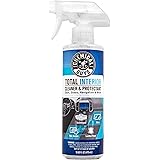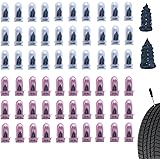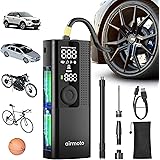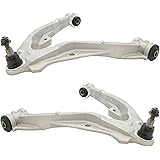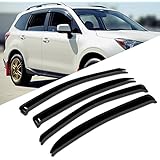Table of Contents
Are you using the right fuel for your oil lamp? Choosing the correct fuel is key for safe and efficient lighting. Kerosene and lamp oil are the top choices, but they vary in price, performance, and safety.
Kerosene is often picked for its easy availability and lower cost. Yet, lamp oil is favored for its cleaner burn and less soot. Knowing the differences between these fuels helps you make a better choice.
Key Takeaways
- Choose the right fuel for safe and efficient lighting.
- Kerosene and lamp oil are the most common fuel options.
- Kerosene is cost-effective but may produce more soot.
- Lamp oil burns cleaner and produces less soot.
- Understanding fuel characteristics is crucial for making an informed decision.
Why Fuel Choice Matters for Oil Lamps
Choosing the right fuel is key for oil lamps to work well. The fuel type greatly affects the lamp’s performance and how long it lasts.
How Different Fuels Affect Performance
The fuel used in an oil lamp greatly impacts its performance. Fuels vary in how they burn, affecting the light’s brightness and how long it lasts. For example, fuels with more energy density burn brighter and longer.
Key factors influenced by fuel choice include:
- Burn time: How long the lamp can run on one fill.
- Brightness: How bright the light is.
- Smoke and soot production: Some fuels burn cleaner, making less smoke and soot.
The Impact of Fuel on Lamp Longevity
The fuel choice also affects how long an oil lamp lasts. Using the wrong fuel can cause problems like clogged wicks and corrosion. For instance, some fuels can leave residues that harm the lamp over time.
To maximize lamp longevity, it’s crucial to:
- Choose a fuel that is compatible with the lamp’s materials.
- Follow proper maintenance and cleaning schedules.
- Use high-quality fuels that are less likely to cause issues.
Understanding how fuels impact performance and longevity helps users make better choices. This way, they can get the most out of their oil lamps.
The Best Fuel Options for Oil Lamps: A Comprehensive Guide
Knowing the different fuels for oil lamps is key for the best use. In the past, oil lamps used whale oil, camphene, or fat. Now, we have kerosene, lamp oil, and vegetable oils.
Traditional vs. Modern Fuel Options
Kerosene has been a top choice for years because it’s affordable and easy to find. But, modern fuels like lamp oil and vegetable oils burn cleaner and produce less soot. “Choosing between old and new fuels depends on what matters most to you,” says a lighting expert.
Modern fuels are made to burn cleaner and smell less, perfect for inside use. For example, lamp oil is loved for its clean burn and comes in many types for different lamps.
Key Selection Criteria for Optimal Performance
When picking a fuel for your oil lamp, think about these:
- Burn Time: Fuels like kerosene burn longer than some newer ones.
- Soot Production: Cleaner fuels like lamp oil mean less soot and less cleaning.
- Odor: Some fuels, like vegetable oils, smell nicer than old ones.
- Safety: The fuel’s flash point is key for safety. Fuels with higher flash points are safer.
By looking at these points, you can pick the best fuel for your lamp. This ensures your lamp works well and safely. As “the right fuel can significantly enhance the overall lighting experience”, choosing wisely is important.
Paraffin Oil: The Popular Standard
Paraffin oil is a refined petroleum product. It’s clean-burning, making it perfect for indoor lighting. It burns reliably and consistently.
Composition and Properties
Paraffin oil comes from petroleum and is made of hydrocarbons. Its refined composition leads to a clean burn. This means less soot and smoke.
Its viscosity works well with many oil lamps. This makes it a versatile fuel. Paraffin oil also has a high flash point, which makes it safer to handle and store.
It’s stable and doesn’t break down quickly when stored right. This is a big plus.
Best Paraffin Oil Brands in the US Market
In the US, several brands offer top-notch paraffin oil for lamps. Some of the best include:
- Lamps Plus Paraffin Oil
- Paraffin Oil by Lamplight Farms
- HomeLight Paraffin Lamp Oil
These brands are known for their high-quality, clean-burning fuels. They meet the needs of oil lamp users.
Ideal Lamp Types for Paraffin Oil
Paraffin oil works well with many oil lamp types. This includes traditional glass lamps and decorative ones. It’s great for lamps with smaller font sizes because it burns consistently.
When picking an oil lamp, think about its design and material. Glass and metal lamps are good choices. They’re durable and easy to clean.
Compared to kerosene, paraffin oil burns cleaner and is safer indoors. But, always follow the lamp’s manufacturer guidelines. This ensures it works well with paraffin oil.
Kerosene: The Traditional Powerhouse
Kerosene is still a top choice for oil lamps around the world. Its lasting popularity shows it’s a reliable fuel.
Understanding K-1 Grade Kerosene for Indoor Use
K-1 grade kerosene is the cleanest kerosene for indoor use. It has fewer fumes and less soot than other kerosene types. This makes it better for a healthier home environment.
Key characteristics of K-1 grade kerosene include:
- High purity level
- Low sulfur content
- Clean-burning properties
Where to Purchase Quality Kerosene
You can find quality kerosene at many places, online and offline. Some top spots for K-1 grade kerosene are:
| Retailer | Product Offering | Price Range |
|---|---|---|
| Home improvement stores | K-1 grade kerosene | $5-$10 per gallon |
| Online marketplaces | Various kerosene brands | $4-$12 per gallon |
| Hardware stores | Kerosene for oil lamps | $6-$11 per gallon |
Handling and Storage Requirements
It’s important to handle and store kerosene safely. Here are some tips:
Handling: Always handle kerosene in well-ventilated areas. Avoid skin contact. Wear gloves and eyewear when pouring or handling.
Storage: Keep kerosene in a cool, dry place. Stay away from sunlight and heat. Use approved containers that are tightly sealed to prevent leaks and contamination.
Lamp Oil: Refined for Indoor Use
Modern lamp oils are great for indoor lighting. They burn cleaner and produce less soot. This makes them perfect for those who want a healthier home.
Chemical Composition of Modern Lamp Oils
Lamp oils are made from refined petroleum. They are designed to burn clean and efficiently. The refining process removes impurities and improves how the oil burns.
This results in a fuel that burns cleaner and has a consistent flame. A consistent flame is key for a nice ambiance and safe lamp operation.
Top Lamp Oil Products for Different Needs
There are many top-rated lamp oils on the market. Each meets different needs and preferences. Some popular ones include:
- Lamp oil with a high flash point for enhanced safety
- Odorless lamp oil for sensitive environments
- Smokeless lamp oil for a cleaner burn
When picking a lamp oil, think about your lamp and where it will be used.
| Product | Key Features | Best For |
|---|---|---|
| Lamp Oil Plus | High flash point, clean burning | General indoor use |
| Odorless Lamp Oil | Odorless, smokeless | Sensitive environments |
| Premium Lamp Oil | High-quality, consistent burn | High-end lamps and decor |
Lamp Oil vs. Paraffin: Key Differences
Lamp oil and paraffin oil are different. Lamp oil is more refined for oil lamps. Paraffin oil is used in many other ways, like heating and industry.
“Lamp oil is formulated to provide a cleaner burn and less soot compared to paraffin oil, making it a preferred choice for indoor lighting.”
In summary, lamp oil is better than paraffin oil for indoor lighting. It burns cleaner and has less soot. Choosing the right lamp oil can make your lighting safer, more pleasant, and efficient.
Lantern Oil: Optimized for Outdoor Lighting
Lantern oil is made for outdoor lighting. It’s durable and works well in different weather. It’s great for camping, emergency lights, and more.
Weather-Resistant Properties
Lantern oil stands up to the weather. It doesn’t break down or lose its power in bad weather. This is key for outdoor use, where it faces changing temperatures and humidity.
Key Features of Weather-Resistant Lantern Oil:
- Stable combustion in cold and hot temperatures
- Resistance to moisture, reducing the risk of phase separation
- Consistent burn quality despite wind or humidity
Experts say lantern oil is a big win for outdoor fans. It offers reliable light in tough spots.
“The development of weather-resistant lantern oil has significantly enhanced the outdoor experience, providing users with a dependable source of light regardless of the weather conditions.”
Best Lantern Oil Brands for Camping and Emergencies
Some brands are top picks for lantern oil. They’re perfect for camping and emergencies. Here are a few:
| Brand | Product Features | Price Range |
|---|---|---|
| CampBright | Weather-resistant, clean-burning | $5-$10 |
| EmergencyGlow | Long-lasting, stable combustion | $8-$15 |
| OutdoorPro | Moisture-resistant, efficient burn | $6-$12 |
Performance in Extreme Temperatures
Lantern oil works well in extreme temperatures. It’s good for cold camping or hot deserts. It gives consistent light.
Lantern oil’s performance in extreme temperatures shows its quality. It’s a reliable light source, no matter the weather.
Vegetable-Based Oils as Natural Alternatives
Looking for a natural way to light your space? Vegetable-based oils are a great choice for oil lamps. They’re a renewable and sustainable option compared to petroleum-based fuels.
Olive Oil: The Historical Lamp Fuel
Olive oil has been lighting homes for centuries, where it’s common. It’s been used since ancient times, giving off a warm, soft glow. But, it’s important to know its viscosity and smoke point. Using olive oil can result in a cleaner burn if the lamp is properly maintained.
Coconut and Other Plant-Based Options
Coconut oil is another good choice for lamps. It burns cleaner than olive oil because of its higher smoke point. Other oils like canola or grapeseed can also work well, each with its own burn quality.
Adapting Your Lamp for Vegetable Oil Use
To use vegetable oils, you might need to change your lamp. Clean it well to remove old fuel residue. Make sure the wick fits the new oil. Some lamps may need wick size or material changes for better burning.
Switching to vegetable oils requires understanding their differences. Each oil affects your lamp’s performance and life. Researching the right oil for your lamp is crucial for a smooth transition.
Smokeless Fuel Options for Indoor Use
For those who like traditional oil lamps indoors, picking a smokeless fuel is key. It helps keep the air clean. Smokeless fuels cut down on smoke, perfect for indoor spaces where air quality matters.
The Science Behind Smoke Production
Smoke in oil lamps comes from fuel not burning fully. This incomplete burning lets particles into the air, causing smoke. The fuel’s makeup greatly affects this.
Fuels with impurities or not refined well make more smoke. On the other hand, clean-burning fuels are made to burn better, making less smoke. They’re refined better, removing stuff that causes smoke.
Top Smokeless Fuels and Their Formulations
There are many smokeless fuel options for indoor use, each with its own mix. Some top ones include:
- Lamp oil made for indoor use, burning clean with little smoke.
- Kerosene refined well, burning clean and making less smoke.
- Special fuels for smokeless use, often in decorative lamps.
These fuels aim for a smokeless or low-smoke burn. They’re great for indoor lighting.
Reducing Smoke with Proper Lamp Maintenance
Even with smokeless fuels, keeping your lamp clean is key. Regular cleaning, trimming the wick right, and using the right wick size are important. These steps help cut down smoke, even with fuels that aren’t completely smokeless.
Good maintenance boosts the lamp’s performance and safety. It lowers fire risks from clogged wicks or dirty lamps.
Odorless Oil Lamp Fuels for Sensitive Environments
Odorless oil lamp fuels are perfect for places where strong smells are a problem. They’re great for people who can’t handle strong odors or need a quiet light source.
Chemical Treatments for Odor Reduction
These fuels are made with special chemical treatments. Hydrotreating removes bad smells and makes the fuel burn cleaner. This means less scent when you light it.
Odor-masking agents are also used. They hide any smell left behind. This makes the fuel almost scentless, perfect for inside use.
Best Odorless Fuel Brands and Products
Many brands offer odorless lamp fuels for sensitive areas. Here are some top ones:
| Brand | Product | Key Features |
|---|---|---|
| Lamp-Oil Inc. | Odorless Lamp Fuel | Chemically treated for minimal odor, clean-burning |
| CleanBurn Fuels | Ultra-Pure Lamp Oil | Hydrotreated for purity, odorless |
| Silent Flame | Odorless Kerosene | Advanced odor-masking technology, smokeless |
Situations Where Odorless Fuels Are Essential
Odorless fuels are key in places where smells can be a problem. This includes:
- Residential homes with elderly or sensitive individuals
- Hospitals and healthcare facilities
- Offices and workplaces with sensitive occupants
- Spaces with poor ventilation
In these places, odorless fuels offer a thoughtful lighting option. They keep the atmosphere nice without bothering others.
Clean-Burning Fuels for Healthier Indoor Air
Clean-burning fuels are key for better indoor air when using oil lamps. The fuel’s quality affects how well it burns and the air quality.
Understanding Combustion Byproducts
Fuels burning produce harmful byproducts when inhaled. Carbon monoxide, particulate matter, and volatile organic compounds are common ones. It’s important to choose fuels that emit fewer harmful gases.
The burning process in oil lamps depends on the fuel, lamp design, and room ventilation. Good ventilation helps lower harmful byproduct levels.
Ultra-Refined Fuel Options for Clean Burning
Ultra-refined fuels burn cleaner, making fewer harmful byproducts. They go through strict refining to remove impurities that cause smoke and emissions.
- Lamp oils made for indoor use
- Kerosene that meets the K-1 grade for cleaner burning
- Specialty lamp fuels for smokeless burning
Lamp Oil by XYZ Company and K-1 Kerosene by ABC Inc. are well-known for their clean and efficient burning.
| Fuel Type | Combustion Byproducts | Ventilation Requirement |
|---|---|---|
| Ultra-Refined Lamp Oil | Minimal soot and smoke | Low to moderate |
| K-1 Kerosene | Less particulate matter | Moderate |
| Standard Paraffin Oil | More soot and smoke | High |
Ventilation Requirements for Different Fuels
Good ventilation is essential for oil lamps indoors. The need for ventilation changes with the fuel type. Ultra-refined fuels need less than standard paraffin oil.
Good airflow in the room with oil lamps reduces air pollution risk. Opening windows, using exhaust fans, or installing a ventilation system helps improve air flow.

Eco-Friendly and Sustainable Fuel Options
Eco-friendly fuel options are changing how we use oil lamps. More people want to help the planet, so they look for green fuels. This need has led to new, better choices in the market.
Biodegradable and Renewable Lamp Fuels
Biodegradable and renewable fuels are better for our planet. They come from nature and harm the environment less. Some good options are:
- Vegetable-based oils
- Biodiesel
- Bio-based lamp oils
These fuels cut down on carbon emissions. They also burn cleaner, making less soot and smoke.
Carbon Footprint Comparison of Different Fuels
It’s important to know how different fuels affect the environment. Here’s a table that shows the carbon footprint of various fuels:
| Fuel Type | Carbon Footprint (g CO2/MJ) |
|---|---|
| Paraffin Oil | 73.3 |
| Kerosene | 71.5 |
| Biodegradable Lamp Oil | 45.0 |
| Vegetable-Based Oil | 30.0 |
The table shows that biodegradable and vegetable oils are better for the planet. They have a much lower carbon footprint than paraffin oil and kerosene.
Emerging Green Technologies in Lamp Fuels
New green technologies are coming to make lamp fuels even better. Some new trends include:
- Advanced biofuel formulations
- Recycled oil products
- Low-carbon fuel blends
These new ideas will help make oil lamps even greener. They will be a better choice for our planet.
Best Fuels for Vintage and Antique Oil Lamps
Vintage and antique oil lamps need the right fuel to work well and stay in good shape. The right fuel keeps these lamps running smoothly. It also helps them last for many years to come.
Matching Fuel Types to Historical Lamp Designs
Each historical era and lamp design needs its own fuel type. Older lamps might use kerosene or paraffin oil. Some antique lamps are best with whale oil or camphene, but these are rare today.
Key considerations for matching fuel types to historical lamps include:
- The material composition of the lamp (e.g., brass, glass, or ceramic)
- The era in which the lamp was made
- The lamp’s design features, such as the wick type and burner
Protecting Fragile Components with Appropriate Fuels
Antique lamps have delicate parts that can break if the wrong fuel is used. Some fuels can ruin seals or harm certain materials.
To protect these components, it’s essential to:
- Choose fuels that are compatible with the lamp’s materials
- Avoid fuels with additives that could potentially harm the lamp
- Regularly inspect and maintain the lamp to prevent fuel-related issues
Reproduction Fuels for Authentic Experiences
For those who collect and enjoy these lamps, using reproduction fuels can make the experience more real. These fuels are made to burn like the original fuels did, giving a true feel of the past.
Reproduction fuels offer several benefits:
- They help maintain the historical accuracy of the lamp’s operation
- They can provide a more authentic aesthetic experience
- They are often formulated to be safer and more consistent than their historical counterparts
Choosing the right fuel for vintage and antique oil lamps helps them work well and stay safe. This way, collectors can enjoy these pieces and feel connected to history.
Comparing Burn Times and Efficiency
It’s key to know how different fuels affect your oil lamp’s burn time and efficiency. The fuel you choose can change how long your lamp burns and how well it works.
Fuel Consumption Rates by Type
Different fuels burn at different rates, which affects how long they last. For example, paraffin oil burns better than kerosene, lasting longer. Here’s a look at how much each fuel type consumes:
| Fuel Type | Consumption Rate (ml/hour) | Average Burn Time (hours) |
|---|---|---|
| Paraffin Oil | 10-12 | 8-10 |
| Kerosene | 12-15 | 6-8 |
| Lamp Oil | 9-11 | 9-12 |
Maximizing Burn Time with Proper Techniques
To get the most burn time, keep your lamp well-maintained. This means trimming the wick right and keeping the lamp clean. Also, using a lamp shade can help by directing the flame and cutting down on drafts.
Cost-Efficiency Analysis Over Time
Even though some fuels might seem cheaper at first, their efficiency and burn time can change the cost over time. Doing a cost-efficiency analysis can help pick the best fuel for you. For instance, paraffin oil might cost more than kerosene, but it burns longer and cleaner, making it more cost-effective in the long run.
By knowing how fuels consume, using the right techniques to extend burn time, and doing a cost analysis, you can choose the best fuel for your oil lamp. This ensures your lamp works well and efficiently.
Safety Considerations for Oil Lamp Fuels
Choosing the right fuel for your oil lamp is crucial for safety and performance. It’s important to consider the fuel type for safe lamp operation.
Proper Storage Containers and Locations
Storing oil lamp fuels needs careful attention. Use containers made for flammable liquids and keep them sealed when not in use. Store them in a well-ventilated area, away from living spaces and ignition sources.
Safe Handling and Pouring Techniques
Handling oil lamp fuels requires caution. Always pour fuel in a well-ventilated area. Avoid spills on hot parts or ignition sources. Use a funnel to reduce spills when filling lamps.
Fire Safety Equipment for Oil Lamp Users
Having the right fire safety equipment is key. Keep a fire extinguisher rated for petroleum fires nearby. It’s also wise to have a fire evacuation plan and ensure everyone knows how to respond in a fire.
By focusing on these safety tips, you can greatly reduce oil lamp risks. Whether using kerosene or modern oils, safety should always come first.
Troubleshooting Common Fuel-Related Issues
Oil lamps add warmth and coziness to any home. But, they can face fuel-related problems like smoking, sooting, uneven burning, and contamination. Knowing how to fix these issues is key for good performance and safety.
Addressing Smoking and Sooting Problems
Smoking and sooting often come from bad wick trimming, low-quality fuel, or poor care. First, check the wick. It should be about 1/4 inch long. Using the right fuel can also cut down on these issues.
| Cause | Solution |
|---|---|
| Improper Wick Trimming | Trim wick to 1/4 inch |
| Low-Quality Fuel | Switch to high-quality lamp fuel |
| Poor Lamp Maintenance | Regularly clean the lamp and chimney |
Solving Uneven Burning and Flickering
Uneven burning and flickering can stem from drafts, wrong wick adjustment, or fuel problems. Place the lamp where it’s not drafty. Make sure the wick is just right, not too long or too short.
- Check for drafts and relocate the lamp if necessary
- Adjust the wick to the correct height
- Ensure the fuel level is adequate
Dealing with Fuel Contamination
Fuel can get contaminated from bad storage, air exposure, or old fuel. If the fuel is bad, throw it out and get new fuel.
Prevention is key: Keep fuel in a cool, dry spot, away from sunlight and moisture. Always check the fuel’s expiration date before using it.
Regional Availability and Regulations
Regional rules greatly affect what lamp fuels you can buy. The types and availability of lamp fuels change a lot by region. This is because different places have their own rules.
US Regulations Governing Lamp Fuel Sales
In the United States, buying lamp fuels is controlled by both federal and state laws. These laws focus on safety, the environment, and protecting consumers. For example, the Consumer Product Safety Commission (CPSC) makes rules for safe lamp fuel use. The Environmental Protection Agency (EPA) looks at how these fuels affect the environment.
Some states have their own rules for lamp fuel sales and use. For example, California has strict rules about fuels that pollute. It’s important for buyers to know these rules when they shop for lamp fuels.
Where to Purchase Specialty Lamp Fuels
You can find specialty lamp fuels at stores that sell lighting or outdoor gear. Many people also buy them online from sellers who ship across the country. When shopping online, make sure the seller is trustworthy and follows local laws.
Here are some places to buy specialty lamp fuels:
- Outdoor and camping stores
- Specialty lighting stores
- Online marketplaces like Amazon
- Hardware stores with a lighting section
Shipping and Transportation Restrictions
Rules for shipping lamp fuels depend on the fuel type and the carrier. Some fuels are seen as hazardous and have special shipping rules.
| Fuel Type | Shipping Restrictions | Transportation Regulations |
|---|---|---|
| Paraffin Oil | Ground transport only | Classified as non-hazardous |
| Kerosene | Avoid air transport | Classified as hazardous |
| Lamp Oil | Check with carrier | May be classified as hazardous |
Before buying lamp fuels online, check with the shipping carrier and the seller. This ensures they follow all the right rules.
Conclusion: Choosing the Right Fuel for Your Oil Lamp Needs
Choosing the right fuel for oil lamps depends on several factors. These include the intended use, safety, and personal preference. The best fuel can greatly affect how well your lamp works, how long it lasts, and how much you enjoy using it.
When picking a fuel, think about burn time, smoke, and how it affects the environment. Paraffin oil, kerosene, and lamp oil are common choices. Each has its own good and bad points. Knowing what each fuel does is key to making a smart choice.
A guide on fuel selection can help you figure out the best fuel for your oil lamp. Consider if you’ll use it indoors or outdoors. Also, think about safety and how efficient it is. This way, you can pick the best fuel for your needs.
In the end, choosing the right fuel makes oil lamps better to use. They provide reliable and cozy light for many uses.


